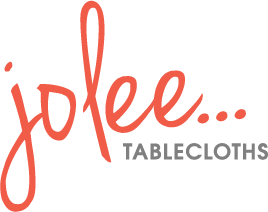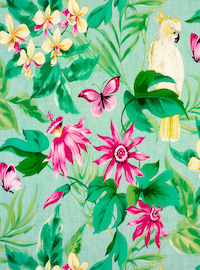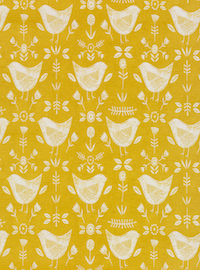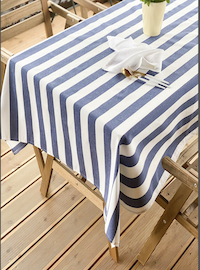Fabric Comparisons
| Fabric | Oil Cloth | PVC Vinyl | Acrylic |
|---|---|---|---|
| Average Price: | From £6.50 | From £3.50 | From £12.99 |
| Machine Washable: | No | No | Yes |
| Edging: | Optional Extra | Optional Extra | Optional Extra |
| Coatings: | 100% PVC | 100% PVC | Teflon and Acrylic |
| Backing: | Cotton/linen/poly cotton | Soft Non-Woven | Cotton/linen/poly cotton |
| Max Width: | 132cm (52") | 140cm (55") | 145cm (57") |
| Can it be sewn? | Yes | Yes | Yes |
| Description: | Historically Oilcloth was cotton fabric soaked in linseed oil and was also called oilskin. It was used as a tablecloth and also for clothing. Times have changed somewhat and modern oilcloth is normally 100% cotton and has a PVC laminate heat pressed onto the cotton to ensure the cloth is wipe-clean. Normally widths vary from 130cm to 134cm and they can be sewn together to make larger tablecloths or for making craft projects. | PVC Vinyl is another product that has been used for years. It can be used for making stickers, banners and of course wipeclean tablecloths. Our PVC Vinyl is made from 100% PVC and has a soft polyester non-woven backing which is normally white in colour. This too can be sewn with to make larger tablecloths and for craft projects. | The terms acrylic and Teflon coated tablecloths are used interchangeably. Most are made from either cotton, linen or a poly-cotton. They have a durable coating but it also gives fabric a more “natural” feel and they have the added bonus that they are machine washable. Widths are traditionally larger with our current ranges going up to 145cm. These too can be sewn together and are perfect for making craft projects. |
What is the difference between oilcloth and PVC tablecloth?
If you do not know much about the different types of wipe clean fabrics available on the market, then you can be easily confused by the terms that get bandied about, especially when people interchange the terms. It is true that both products are made from PVC which adds to the confusion, however side by side there is a huge difference.
The coating
This is where a lot of the confusion comes from when describing fabrics as both use PVC in the process.
After the cotton fabric has been printed on to, it then gets a clear gloss coating of PVC to protect the cotton and print. Leaving a strong wipe clean finish.
PVC starts out as just plain white vinyl, which is then printed to create various patterns and designs. There is no coating process to protect the print, which is why these fabrics fade with time, due to wear.
In summary, oilcloth has a clear pvc coating to protect the cotton base, while PVC is just plain vinyl PVC which is then printed on to.
How to tell the difference
The easiest way to tell without actually feeling the fabric is by looking at the price. Oilcloth is more expensive than PVC – almost twice the price.
In the UK, quality oilcloth typically sells for around £12-15 per meter depending on where you buy from.
Any place claiming to sell oilcloth at a lower price than this (normally around the £10 p/m mark) is probably selling you a lower quality, thinner version. Which we know exists on the market. So just be mindful if quality is important to you.
If you had both in your hand you would notable tell that oilcloth is a thicker and more durable fabric.
Another sign that you are looking at oilcloth, when looking up close, is that the design appears to be underneath the coating. Where as with vinyl PVC, you can quite clearly see the design on the very surface.
The base fabric
The first major difference is that oilcloth has a base fabric of 100% cotton, where as PVC tablecloth has none. Just a white non-woven backing.



